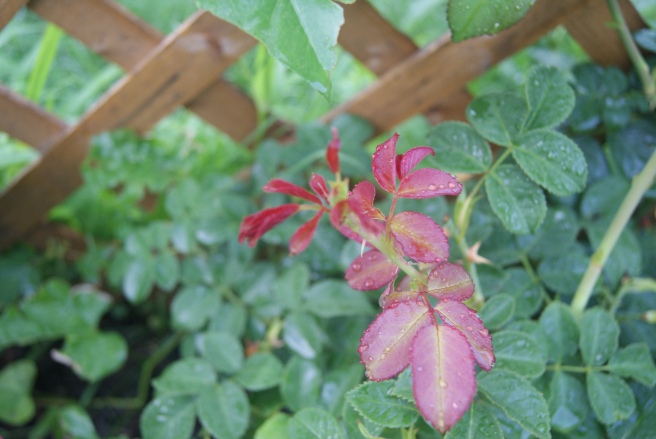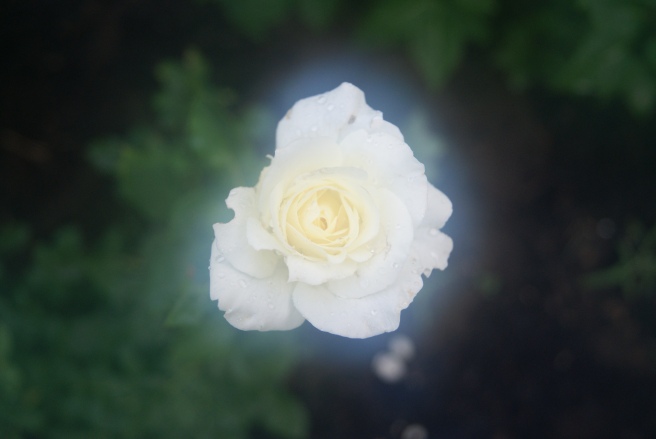My liking for gardens to be lavish is an inherent part of my garden philosophy. I like generosity wherever I find it, whether in gardens or elsewhere.
-Vita Sackville-West
March 26, 1950
In the quote above she speaks of pruning. From her books I gather that Vita thought pruning in the Spring a foolish way to go about the garden. She referenced the Victorian gardens of abundance and the wild gayety of the flowers, able to stretch themselves to the sky.

The gardens of the turn of the century up through mid-century established a habit of cutting their roses right down to the ground in order to achieve abundant blooms. But in doing so they only stifled growth. Vita argues that roses ought to be left alone in the Spring, and if you didn’t believe her she simple advised: “the only thing is to be bold; try the experiment; and find out.”
I do not prune my roses. Instead, the only thing I do is deadhead them throughout their bloom season and in the spring to make the greens look more attractive.

Deadheading is my favorite thing. It’s therapeutic and it’s grounding. I’ve heard when monks are upset or a little melancholy they are told to work in the garden until they feel better. Deadheading is the perfect way to fidget while thinking out one’s problem. But why should we cut off the spent flowers like I will do soon to my Floribunda Tuscan Sun above?
The rosarians whose books I’ve read fail greatly at one simple task. They order us: “deadhead at an angle facing away from the leaf a quarter inch above the leaf”. They show pictures: “too much”, “not enough”. But why? They never explain this. Perhaps if they did we would be more apt to follow orders? Knowing what treachery might befall upon our precious blooms we might do as they say.
Let’s examine this:
WHY DEADHEAD?
Do you want your roses to grow rapidly? Would you like more blooms? How about continual bright red baby leaves sprouting all summer long? Deadheading is your answer.
HOW TO DEADHEAD:
The best thing I can tell you is to cut down to the fifth leaf set. Spot the spent bloom, follow its stem downward until you see the first five leaf stem. Cut it there at an angle, opening away from the leaf set. Why? Because this technique gives the new stem room to spike out and from what I’ve read it can also produce stronger stems if this is done one-quarter inch above the leaf set. Like this,

As you can see I’ve had some thrip and beetle damage. This is the first year I’ve had problems with pests of this nature and they caught me a little offguard-please ignore.
Anyway, a week later you should have young leaves shooting out all over, making a pretty show of purple and bright green-almost as striking as the flowers themselves.

Young life, a reminder of our excitement and the hope we carried into spring. I can feel that again when I look at these new leaves of tender delicacy. Do this and you will see. You needn’t worry. Soon you will have an abundance of blooms again, bringing a sense of accomplishment to you and the beauty of youth and hope to your garden once again.




Beautiful photos and great advice. Out here in Jaipur, roses are more of a winter thing (our summers are terrible – trust me you dont want to be around – it gets to 46 deg C). We had a shade bearing tree pruned recently. It is 15 years old and had grown to about 30 feet high – it will grow again. I enjoy reading your blog 🙂
LikeLiked by 1 person
Thank you very much! I enjoy yours too. I’ve always wanted to go to India. In the summer do any flowers bloom or is it too hot? I know it gets hot there I once worked with a manufacturer in Varinasi and I always kept weather on my phone because sometimes the weather would effect shipments-like flood season. 🙂
LikeLiked by 1 person
🙂 A few bloom – trees such as Indian Laburnum (there’s a post on my blog called treetops, I’ve posted a photo of yellow blooms); another called Delonix Regia also blooms in peak summer. In plants I can think of Xenia and cockscombs – both are ornamental.
LikeLiked by 1 person
Cool! At least you get color all year round!
LikeLiked by 1 person
And here I’d thought deadheading was just removing the dead blooms. This was so informative! I have some work to do in the garden. 🙂
LikeLiked by 1 person
Glad you think so! Let me know if you have questions. It’s beautiful to see the fresh leaves, just like spring!
LikeLike